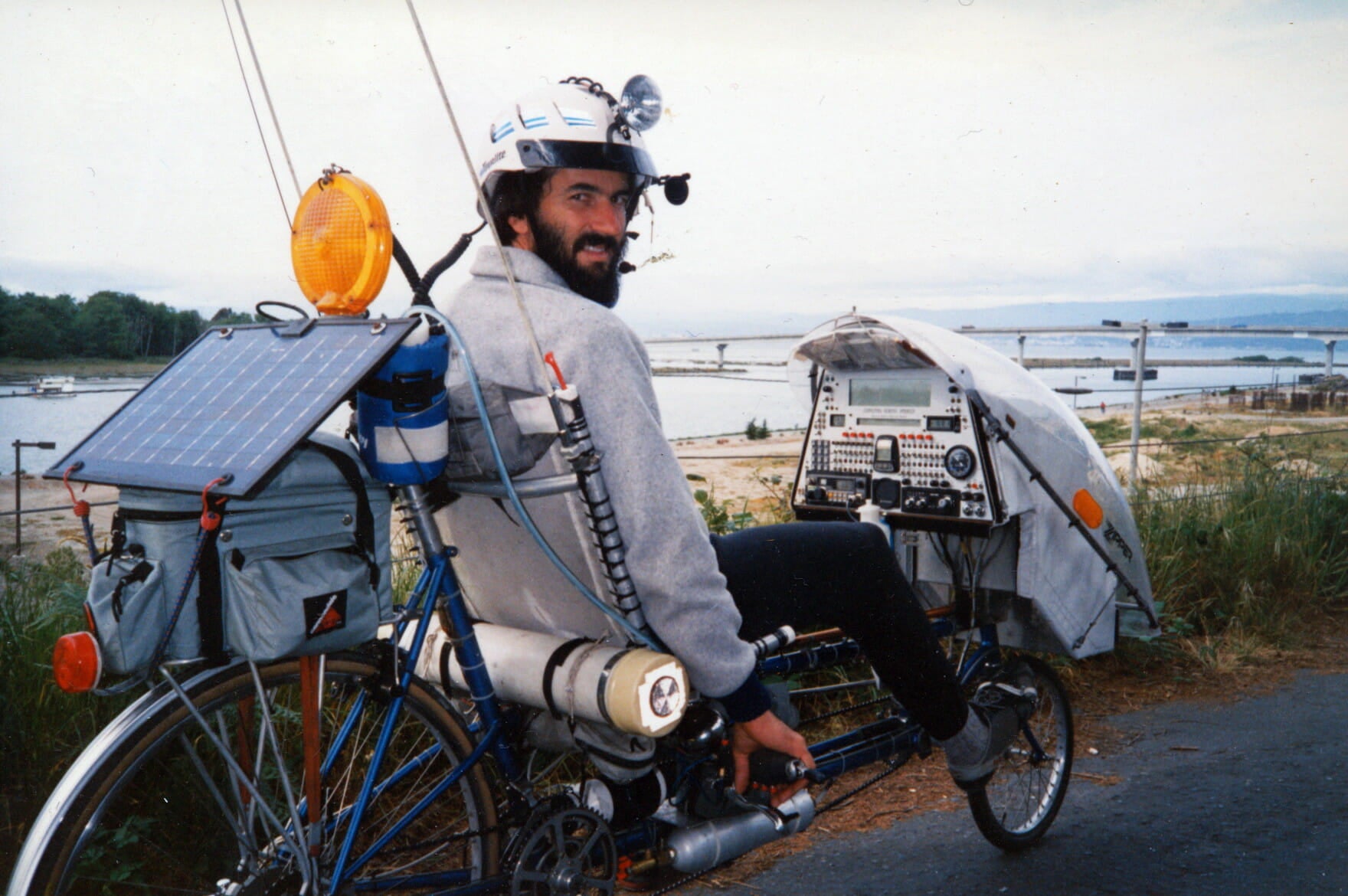
Digital Nomad History
Share
Over the past decade, the concept of being a digital nomad has gained significant popularity. But have you wondered about the origins of this modern lifestyle? In this blog post, we will introduce you to digital nomad history, exploring its roots and how it has evolved over time.
1970s. Timothy Leary's vision about remote work and telecommuting
While primarily known for his work in psychology, Timothy Leary, a countercultural icon, was advocating for remote work and telecommuting long before the internet revolutionized the way we work.
During the 1970s, Leary was frequently interviewed by various media outlets about his views on technology, consciousness, and social change. He also gave numerous lectures and presentations during the 1970s and beyond, where he discussed the transformative potential of technology. These presentations often incorporated discussions of how advancements in computing and telecommunications could enable new forms of work, collaboration, and social organization.

Leary foresaw the potential of technology to enable individuals to work from anywhere, promoting the idea of a decentralized workforce long before it became mainstream. His discussions on these topics were often part of broader conversations about the social and cultural implications of technological advancement rather than focused specifically on remote work.

In his book "Chaos & Cyber Culture" (1994) Leary discussed the rapid evolution of technology and its implications for human communication and interaction. He explored how advances in telecommunications and digital networks were breaking down traditional barriers and enabling new forms of connectivity and collaboration.
1983. Portable technology enabling remote working
In 1983, Compaq Computer Corporation, a new tech company of its time, made a really cool thing - the first ever truly portable computer, the Compaq Portable.
Even though it was expensive at a $2,995 starting price (the equivalent of $9,255 in 2024), they sold over 53,000 of them just in the first year! This computer would be considered big and heavy according to today's standards, weighing as much as 13 kg (28 lb), but you could fold it up into a case could take it with you as a carry-on bag. This new technology was a game changer for workforce mobility.

Back in 1982, PC World Magazine covered the story on the front, headlining “Traveling with the IBM PC’s First Portable Competitor”. This was like a peek into what we now call the "work from anywhere" movement!
In today’s context, the scene still feels familiar, the concept of combining work and play in paradise has been an aspiration since before the Compaq hit the market.
While the definition of “portable” has progressed a lot over the past 40 years, the recognition that technology would uncouple work and location—challenging the foundations and certainties of 20th-century society in the process—has been clear for decades. Every generation has thinkers and tinkerers who dream of connecting seamlessly across borders, locations, and time zones—and some go the extra mile to articulate what that world might look like.
1983. Steven K. Roberts, the first digital nomad
One of the first digital nomads was Steven K. Roberts, who from 1983 to 1991 rode more than 10,000 miles across America on a computerized recumbent bicycle equipped with amateur radio and other equipment that allowed him to talk, type and work on the move during the day before camping at night. Roberts was featured in Popular Computing magazine, which referred to him as a high tech nomad.

2003. Rolf Potts: Embracing long-term travel and experiences over materialism

Author and travel writer Rolf Potts encouraged individuals to embrace the art of vagabonding—the act of long-term world travel—in his seminal book published in 2003. Potts emphasized the value of experiences over material possessions, inspiring readers to break free from the constraints of conventional living and explore the world on their own terms.
(Vagabonding: An Uncommon Guide to the Art of Long-Term World Travel)
2007. Tim Ferriss: The 4-Hour Workweek and the rise of lifestyle design
In 2007, Tim Ferriss catapulted the concept of lifestyle design into the mainstream with the publication of his bestselling book, "The 4-Hour Workweek." Through his unconventional approach to work and life, Ferriss challenged the traditional notions of success and introduced millions of readers to the idea of remote work and passive income. The 4-Hour Workweek popularized the idea of working remotely and outsourcing tasks to virtual assistants.

Jason Fried and David Heinemeier Hansson: Advocates for remote work and distributed teams
As the founders of Basecamp, Jason Fried and David Heinemeier Hansson have long been champions of remote work and distributed teams. Through their company and writings, Fried and Heinemeier Hansson have demonstrated that it is possible to build a successful business without the need for a traditional office, paving the way for a new era of remote work.
Chris Guillebeau: Unconventional Lifestyles and the World Domination Summit
Author and entrepreneur Chris Guillebeau has been a vocal advocate for unconventional lifestyles, including location-independent work and travel. Through his book "The Art of Non-Conformity" and the annual World Domination Summit, Guillebeau has inspired countless individuals to pursue their passions and live life on their own terms.
Mid-2000s. The rise of co-working spaces
In the mid-2000s, the rise of co-working spaces played a crucial role in the growth of digital nomadism. These shared workspaces provided a professional environment for remote workers, fostering collaboration and community. Co-working spaces became hubs for digital nomads, offering them a place to connect, network, and share ideas with like-minded individuals.
The gig economy and remote work
As the gig economy gained momentum, more and more companies started embracing remote work. This shift was fueled by advancements in technology, making it easier than ever for individuals to work from anywhere in the world. The rise of freelancing platforms, such as Upwork and Fiverr, provided digital nomads with a plethora of job opportunities, further fueling the growth of this lifestyle.
2010s. The digital nomad lifestyle goes mainstream
In recent years, the digital nomad lifestyle has gained mainstream recognition. With the advent of social media and the rise of influencers, the allure of travelling the world while working remotely has captured the imagination of many. This increased visibility has led to a surge in the number of people embracing the digital nomad lifestyle.
2020s. The future of digital nomadism
As technology continues to advance and remote work becomes more prevalent, the future of digital nomadism looks promising. After the COVID-19 pandemic, many companies have shifted to remote work, realizing the benefits it offers. This shift may lead to a more permanent acceptance of remote work, creating even more opportunities for individuals to become digital nomads.
In conclusion, the history of digital nomadism is a testament to the power of technology and the changing nature of work. From its humble beginnings to its current mainstream popularity, digital nomadism has come a long way. Whether you're considering embracing this lifestyle or simply curious about its origins, understanding its history provides valuable insights into the evolving nature of work in the digital age.
